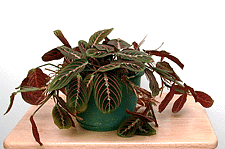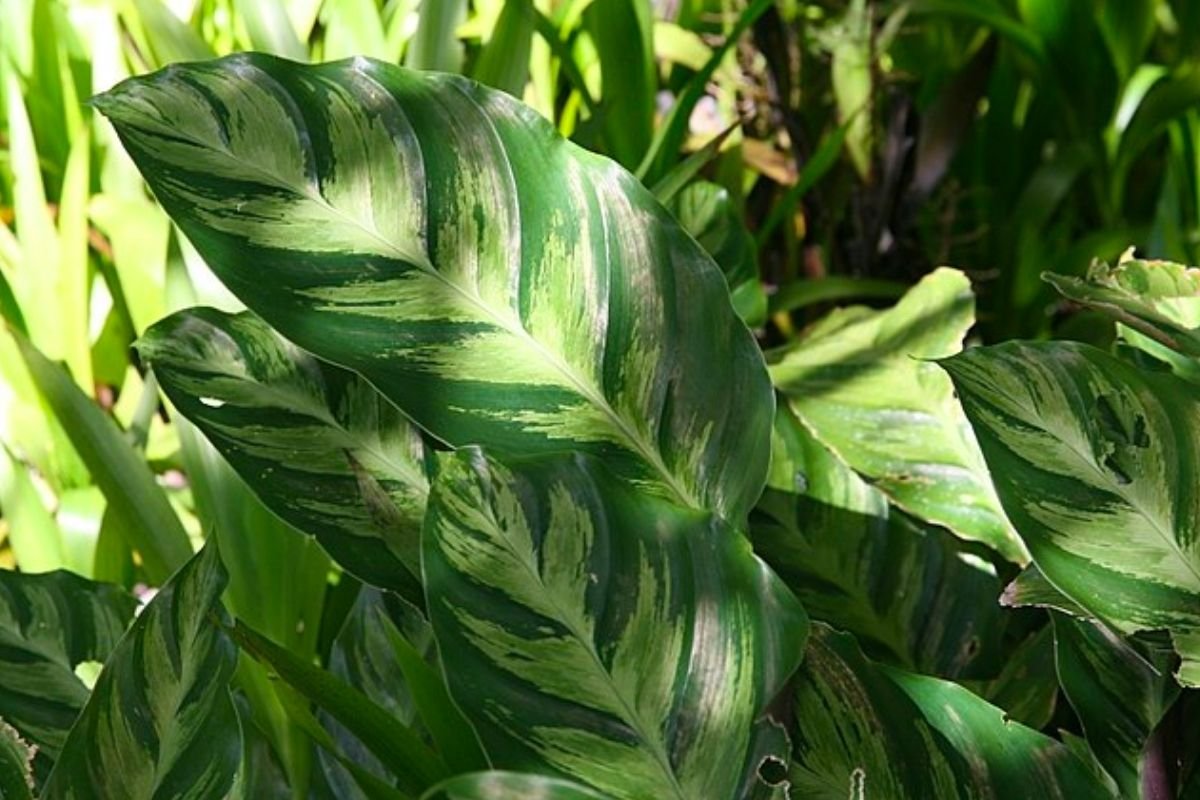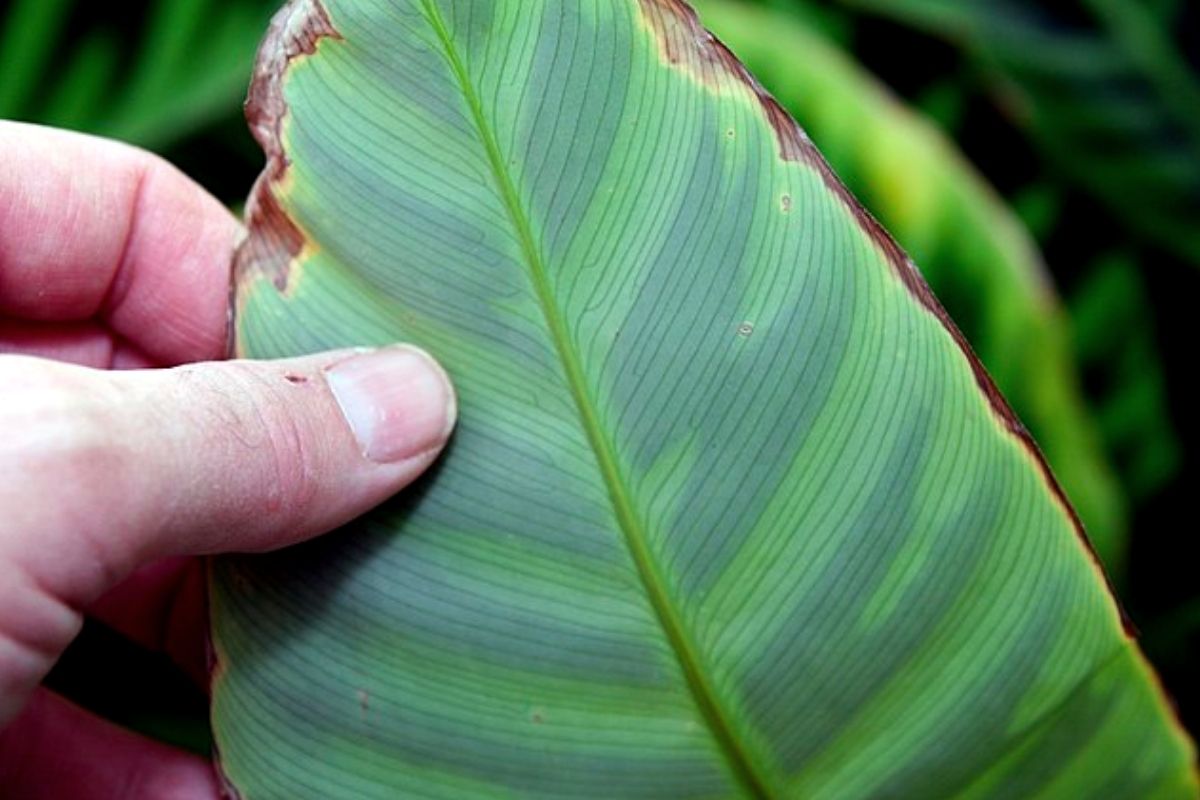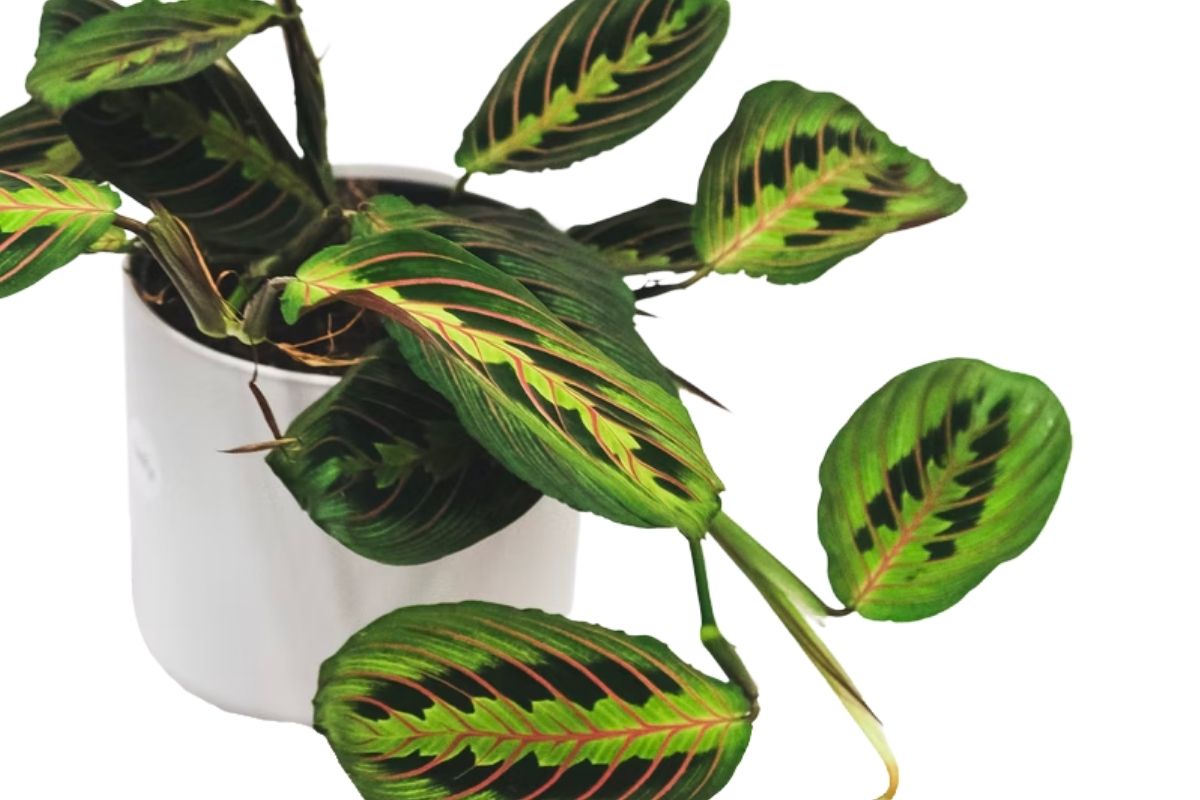If you’re not a morning person, Calathea plants will gently remind you that actually – YES – the sun rising every day is a good thing.
Also known as prayer plants, Calathea is treasured for their dramatic patterns and colorful, abundant leaves that open and close with the daily comings and goings of sunlight.
Prayer plants occasionally suffer from curling leaves and other maladies, and one of the best ways to keep your prayer plant cheering on the sun is to nourish it with Calathea fertilizer during the growing season or once a month. Although not the neediest plant of them all, Calathea does need a bit more attention than the average houseplant.

What to look for in a calathea plant fertilizer
Sun-worship is a demanding occupation for a plant when you think about it. Most plants wait for the sun to come to them – but not calathea! For this reason, you’ll find that prayer-plants need a bit more fertilizer than your other tropical houseplants. calathea are native to Central and South American jungles, where they grow on the forest floor, feeding on the vitamin-, mineral-, and nutrient-rich topsoil that’s buzzing with bioactivity. Prayer plants have shallow roots that absorb nutrients as they need them, slowly and consistently.
When replicating these growing conditions at home, you’ll find that calathea appreciates regular fertilizing during its growing season. As an understory plant, calatheas tend to prefer medium to bright indirect light, but when the length of the day shortens in fall and winter (for anyone living away from the equator), the plant will enter dormancy – like most others.
It won’t drop its leaves, but it will grow much more slowly. During dormancy, your prayer plant won’t need as much water as it does in the summer, and it won’t need any fertilizer at all. Calathea plants enter their energy-conserving state by relying on nutrient reserves made earlier in the year.
The more vibrant and numerous leaves your calathea has before dormancy, the better it will be able to make it through the lower-energy periods of the year.

For a rather nutrient-thirsty plant, calathea isn’t too picky when it comes to the type of fertilizer. When you choose a fertilizer for your calathea plant, an all purpose plant food will do that covers the main three macronutrients (N, nitrogen, for chlorophyll production; P, phosphorus, for strong roots and buds; and K, potassium, for cell health and reproduction, as well as moisture retention) and general micronutrients needed for plant growth.

Look for fertilizer with a balanced NPK ratio for your calathea. If you’re eager to encourage your calathea to reproduce, you can try a formula with a bit more phosphorus, which will help the plant’s root growth in particular. Calathea reproduce through rhizomes, or root extensions, that grow into stems and sprout leaves.
You can recreate the Calathea plant’s fertile native habitat by applying a diluted fertilizer (add twice as much water as recommended for a single dose) to your plant’s soil a few times per year in the spring and summer. Besides nourishing the vibrantly colored leaves on your plant, fertilizer will ensure that your calathea opens and closes fully in response to sunlight.
Learn more about caring for your specific calathea plant:
- Calathea Orbifolia Care Guide: How To Care For Pinstripe Plants
- Calathea Lancifolia Care: How To Keep Rattlesnake Plants Happy
- Calathea Ornata Care Guide: How To Care For Pinstripe Plants
Types of calathea plant fertilizers
Fertilizers are available in different formulas that can be tailored to your individual plant needs. Calathea are happiest with liquid and slow release fertilizers that supply nutrients consistently, mimicking the bioactive jungle topsoil. You’ll want to start with good-quality soil that drains really well. All-purpose potting soil usually retains too much moisture for calathea; the best soil for calathea will include about 50% chunky drainage and aeration elements like an orchid park, perlite, charcoal, or LECA. You can add these elements to a store-bought, well-draining potting soil to make the perfect base for your fertilizer. These are the different types of fertilizer:
Liquid fertilizers
Liquid fertilizers can be synthetic (isolated nutrient) formulas, or liquified organic material like fish or seaweed. Because calathea have shallow root systems, they prefer a small amount of liquid fertilizer more frequently than a larger amount of fertilizer every once in a while. Regular feeding will allow your Calathes’s roots to absorb the nutrients as efficiently and consistently as they would in nature, keeping the plant colorful and fit for its daily sun salutations 🏋🏾
During the spring and summer, add half or a quarter of the recommended liquid fertilizer for a flowering dosage into your watering can, and apply every 2-3 weeks during your regular watering routine (every 2 weeks for larger plants, and every 3 weeks for smaller ones). If you find it easier to fertilize less often, apply the full strength dosage for flowering plants once every 6 weeks instead.
Slow release fertilizers
Slow-release fertilizers like synthetic or organic granules, or solid organic matter that decomposes over several weeks or months, are formulated to stay in the soil longer and only dissolve a bit at a time with waterings. This category includes DIY plant fertilizers like worm castings, aquarium water, and compost from food scraps. When you use slow-release fertilizer on your calathea plant, do a soil test to check the nutrient profile of your potting soil before applying each time. If the level is still even, wait a week or two longer and check again to see if the nutrient source has been depleted yet.
Granular fertilizers
Granular fertilizers will provide your calathea with nutrients that are less quickly available than liquid formulas, but that don’t stay in the soil quite as long as slow release or organic fertilizers. Granular fertilizers, however, have a longer shelf life than the other two kinds, and these can be dissolved in water to create a liquid application. The amount of granular fertilizer you’ll need to add to water will vary based on the size of your calathea plant and dosing instructions for your particular fertilizer. Always err on the side of caution if you’re unsure about the amount of fertilizer to use. This will keep your calathea safe from root damage by over-fertilization.
How often to fertilize calathea plants
You’ll need to watch your plant closely to determine the best fertilizer frequency for your climate and specific plant, because humidity, sunlight, soil conditions, and your plant’s health will all affect how much fertilizer it will be happiest with.
Typically, small calathea plants should be fertilized two or three times during the growing season (between March and September) with full-strength applications, while larger plants will gladly accept six to eight half- or quarter-strength applications of fertilizer.
Spring
Spring brings revival as daylight hours increase and usher in warmer temperatures. More sun means the restart of chlorophyll production and nutrient absorption for your calathea, resulting in a burst of new foliaige growth. Time your calathea’s first dose of fertilizer for the year during the end of winter, when you notice the first signs of spring sprouting up outdoors.
Summer / Fall
After a burst of spring growth, your calathea will grow at a slower pace over the warm months of the year. For consistent growth, and to mimic availability patterns in its natural habitat, fertilizing once a month with full-strength applications, or more regularly with diluted solutions will keep your calathea happy. If you opt for more regular fertilizing, it’s a good idea to keep up with regular soil profile testing to make sure you’re not overdoing it. Slow your dosings when fall starts to bring shorter days and frosts outdoors.
Winter
Sleepy time 😴 During these colder and darker months, your calathea closes up shop and conserves energy for the low-light months ahead. You shouldn’t fertilize your plant during these months. Your plant will still need some water, but it won’t be actively absorbing nutrients. If you fertilize your calathea during this time, it will build up in soil, changing its pH without regular waterings or root absorption, and can burn your calathea’s roots. If you want to show your prayer plant some love during these dark months, it will be most grateful with a little water, some humidity, and peace and quiet.
FAQ
Is my calathea changing color because it’s nutrient deficient?
Perhaps. Calathea respond quickly to changes in lighting conditions, so investigate this before changing your fertilizing routine. In the wild, calathea plants grow in nutrient-rich soil that provides a constant supply of all of the essential nutrients they need to grow.
The vibrant colors and patterns of calathea leaves are a result of medium to lower indirect sunlight conditions of the rainforest floor, producing white, light green, dark green, pink, and red colored leaves on different species and cultivars. Too little or too much indirect light can change the amount of chlorophyll your calathea produces. Too little, and leaves fade, turning pale green or white – and too much, leaves will lose their colorful pattern and turn solid green. Keep your prayer plant away from direct sunlight and dark corners if you notice these changes.

If your calathea is nutrient deficient, on the other hand, you should notice a different kind of color change. Leaves usually start to turn yellow or brown as the lack of nutrients slows or stops its vital processes, including photosynthesis, moisture retention, and cell reproduction.
More about fertilizing
- 10 Best Worm Composter Bins For Easy Homemade Compost
- Compost Starter 101: When You Need It And How To Make It
- Our top pothos fertilizer picks for luscious vines
- 5 reasons to use coffee as fertilizer for your plants
- Best fertilizer for Monstera plants for gorgeous leaves
- Fertilizer Burn on Plants? Here’s How to Fix it
- Fiddle leaf fig fertilizer: How to feed your fiddle leaf





